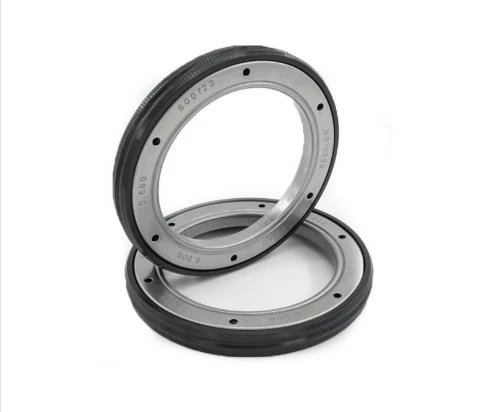Transaxle Oil Seals for Enhanced Performance and Durability in Automotive Applications
Understanding Transaxle Oil Seals Their Importance and Functionality
In the world of automotive engineering, the transaxle plays a crucial role in providing vehicle mobility and performance. This essential component combines the functions of both the transmission and the axle, allowing for a compact design that enhances fuel efficiency and performance. One of the key aspects of maintaining a healthy transaxle is the proper functioning of the oil seal. In this article, we will explore what transaxle oil seals are, why they are important, and how to maintain them.
What is a Transaxle Oil Seal?
A transaxle oil seal is a critical component designed to prevent the leakage of lubricating oil from the transaxle assembly. It is typically made from durable materials such as rubber or Polyacrylate, which provide excellent sealing capabilities while also being resistant to heat and wear. The oil seal is located at various points within the transaxle assembly, including the input and output shafts, where they help keep the lubricating oil contained within the system while also keeping contaminants out.
The Importance of Transaxle Oil Seals
The primary function of an oil seal is to contain the lubricant that is essential for the proper functioning of the transaxle. The transaxle uses this oil to lubricate gears and bearings, reduce friction, and dissipate heat generated during operation. Without the proper amount of oil, the transaxle may overheat, resulting in severe damage to its internal components.
Moreover, oil seals play a crucial role in ensuring that dirt, debris, and moisture do not enter the transaxle system. Contaminants can lead to premature wear of internal parts, resulting in costly repairs and reduced vehicle performance. Therefore, a well-functioning oil seal is vital for the longevity and efficiency of the transaxle.
Signs of a Failing Transaxle Oil Seal
Recognizing the signs of a failing oil seal can help prevent severe damage to the transaxle. Common indications of oil seal failure include
1. Oil Leaks The most apparent sign of a failing oil seal is the presence of oil leaks. If you notice oil pooling beneath your vehicle or down the sides of the transaxle, it could indicate a damaged oil seal.
2. Slipping Transmission A lack of lubrication can lead to slipping gears, reduced responsiveness, or difficulty shifting. If you experience these symptoms, it is crucial to investigate further.
transaxle oil seal

3. Unusual Noises Grinding or whining noises from the transaxle can suggest inadequate lubrication due to an oil leak, often caused by a faulty seal.
4. Overheating If the transaxle is running hotter than normal, it can indicate a lubrication problem, possibly caused by a failing oil seal.
Maintaining Transaxle Oil Seals
To ensure the longevity and proper functionality of transaxle oil seals, regular maintenance is essential. Here are some practical tips
1. Check for Leaks Regularly inspect your vehicle for signs of oil leaks. Early detection can prevent significant damage.
2. Change Transmission Fluid Adhere to your vehicle manufacturer’s recommendation for transmission fluid change intervals. Fresh fluid ensures optimal lubrication and helps minimize wear on seals.
3. Inspect Seals During Service Whenever your vehicle is serviced, have the transaxle oil seals inspected. Any signs of wear or damage should be addressed promptly.
4. Avoid Contamination Keep the area around your transaxle clean to minimize the risk of contaminants entering the system.
5. Professional Assistance If you suspect a problem with your transaxle oil seals, consult a professional mechanic for a thorough inspection and possible replacement.
Conclusion
Transaxle oil seals are small components that play a significant role in the performance and longevity of your vehicle. Understanding their function, recognizing the signs of failure, and practicing proper maintenance can help ensure that your vehicle operates smoothly for years to come. By taking the time to care for these seals, you not only protect your transaxle but also enhance the overall reliability and performance of your vehicle.
-
Simplifying Oil Changes: A Comprehensive Guide to Oil Drain Plugs and Their Variants
News Aug.04,2025
-
Mastering Oil Drain Maintenance: Solutions for Stripped, Worn, and Upgraded Oil Plugs
News Aug.04,2025
-
Fixing Oil Pan Plug Issues: Leaks, Stripped Nuts, and the Right Replacement Solutions
News Aug.04,2025
-
Everything You Need to Know About Oil Drain Plugs: Sizes, Fixes, and Upgrades
News Aug.04,2025
-
Choosing the Right Oil Drain Plug: A Guide to Sizes, Materials, and Drain Innovations
News Aug.04,2025
-
A Complete Guide to Automotive Drain Plugs: Types, Problems, and Innovative Solutions
News Aug.04,2025
-
The Ultimate Guide to Car Repair Kits: Tools and Essentials Every Driver Should Own
News Aug.01,2025
Products categories















